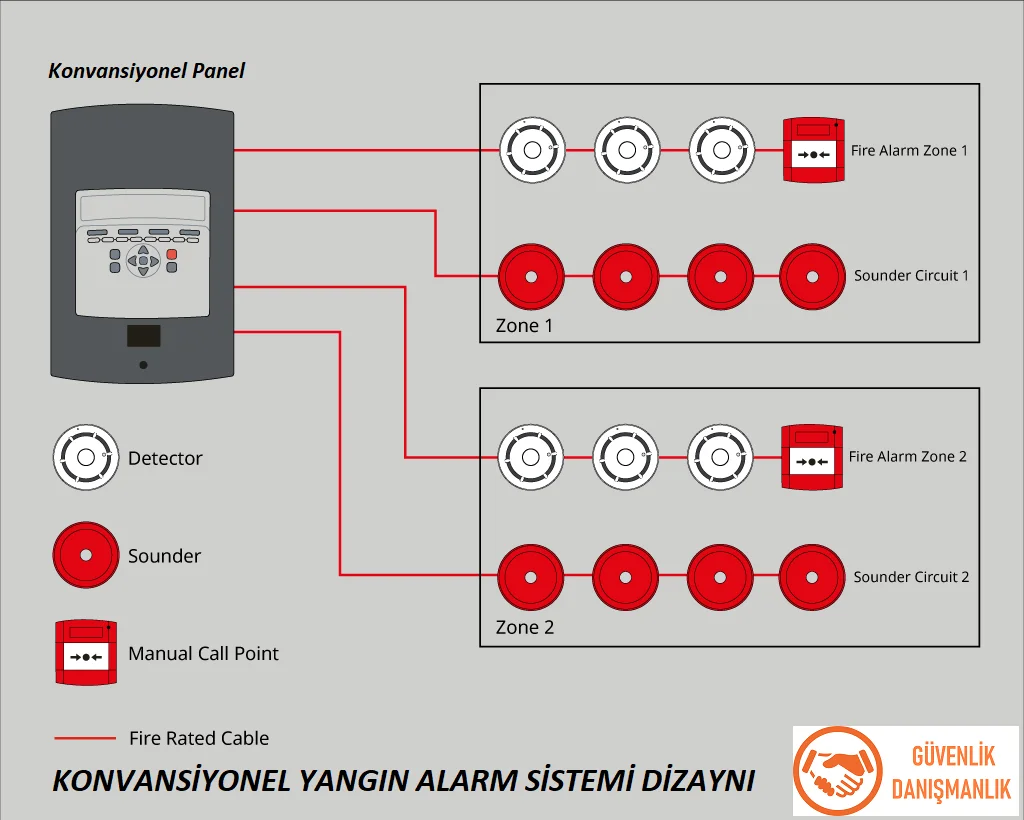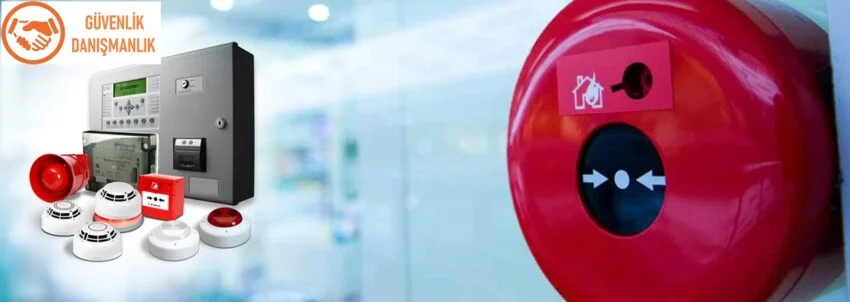What is a fire detection and alarm system?
Fire detection systems, also known as fire alarm systems, are essential security systems that are both a legal requirement and a means of keeping our homes, workplaces, warehouses, and other premises safe from fire hazards. If a fire is detected and promptly extinguished, it can be a minor incident with minimal loss of life and property. However, if a fire goes undetected and grows out of control, it can cause serious property damage and loss of life.
This is where the fire detection system comes into play. Its primary role is to detect fires at an early stage and facilitate prompt intervention to extinguish the fire before it causes any loss of life or property. Fire detection systems consist of a central fire alarm panel and field devices such as smoke detectors, heat detectors, fire buttons, and fire sirens that are used to give warnings. Fire detection systems have become very sophisticated and multifunctional today. This makes it possible to make more sensitive and early detections and carry out various checks during a fire.
Today’s fire detection systems can be divided into two main categories: conventional fire alarm systems and addressable fire alarm systems. Let’s take a closer look at these systems.
Conventional fire detection and alarm systems:
Conventional fire detection systems, also known as traditional fire alarm systems, are the first designed and still widely used fire detection systems. A conventional fire alarm system consists of a conventional fire panel, fire detectors (smoke, heat, etc.), conventional fire button, and conventional fire sirens. The conventional system is based on the zone structure. The fire alarm panel is designed according to the number of zones. There are fire panels with 2, 4, 6, 8, 12, 16, 32, etc. zones. About 20 fire detection detectors can be connected to each fire zone on average.

Convansional Fire Detection System Diagram
In this system, fire detection is done on a zone-by-zone basis. When a fire occurs, that is, when an alarm is triggered from a fire detector, we only see on the fire panel which zone the fire alarm came from. For example, let’s imagine we install this system in a hotel with 20 rooms on the 4th floor, and let’s assume that we have connected a fire detector to each room, thinking of the 4th floor as a zone (e.g. the 4th fire zone). In case of a fire in one of the rooms on this floor, the alarm will be triggered from the 4th zone on the fire panel, but it will not be clear which room the fire is in. All the rooms on the 4th floor need to be checked individually to locate the fire. Since this system does not allow for pinpoint fire detection, it is more commonly used in small-scale environments with fewer detectors. The only way to increase pinpoint detection in this system is to minimize the number of detectors connected to each zone. However, this increases the wiring and panel zone count, resulting in significant system cost increases and therefore creates a disadvantage in terms of cost.
The most important advantage of conventional fire alarm systems is their low cost. That’s why they are still preferred in many places today. The cost of the conventional system panel increases proportionally with the number of zones. Although they are still in use today, it is a fact that they will gradually give way to addressable systems in the coming years.
Addressable fire detection and alarm systems:
Addressable fire alarm systems, as the name suggests, can detect fires in a pinpoint manner with an addressable fire alarm system. In this system, each fire detector and fire button has an electronic address. During a fire, the fire panel can detect which detector the fire detection came from by identifying the address, providing us with a pinpoint fire detection capability. The loop structure, which replaces the zone structure in conventional systems, is used in addressable systems. All addressable devices such as detectors, buttons, sirens are connected to this loop.
Addressable fire alarm system consists of an addressable fire panel, addressable detectors, addressable sirens and buttons, and addressable modules designed for different purposes. In this system, there are different methods of addressing such as automatic addressing by the panel, addressing via switches on detectors, or addressing using an addressing device, depending on the different brands. Therefore, addressing can be done in different ways.

Addressable Fire Detection System Diagram
In addressable systems, the pinpoint fire detection is of great importance in enabling a rapid response to a fire during an emergency situation. Therefore, nowadays, all medium and large-scale fire detection systems are made with addressable systems. Addressable fire systems are professional fire detection systems of today with many different features besides pinpoint fire detection. Let’s try to explain a few important features of them here:
In addressable alarm systems, the detection sensitivity of detectors can be adjusted. This makes it possible to prevent false alarms caused by dirt, cigarette smoke, dust, etc.
In addressable alarm systems, the pollution thresholds of detectors can be monitored, and by cleaning the detectors that give pollution warnings, false fire alarms can be prevented.
In addressable fire alarm systems, fire scenarios can be created in case of any fire. This makes it possible to create many scenarios such as controlling fire dampers, ventilation, elevators, fire doors, which are of great importance in ensuring a safe evacuation and bringing the fire under control.
The only disadvantage of addressable fire alarm systems compared to conventional systems is the high cost of the system. All components of the addressable system are much more expensive than those of the conventional system. However, parallel to the development of technology, system prices are decreasing day by day. When prices are lowered sufficiently, addressable systems will replace conventional systems.





